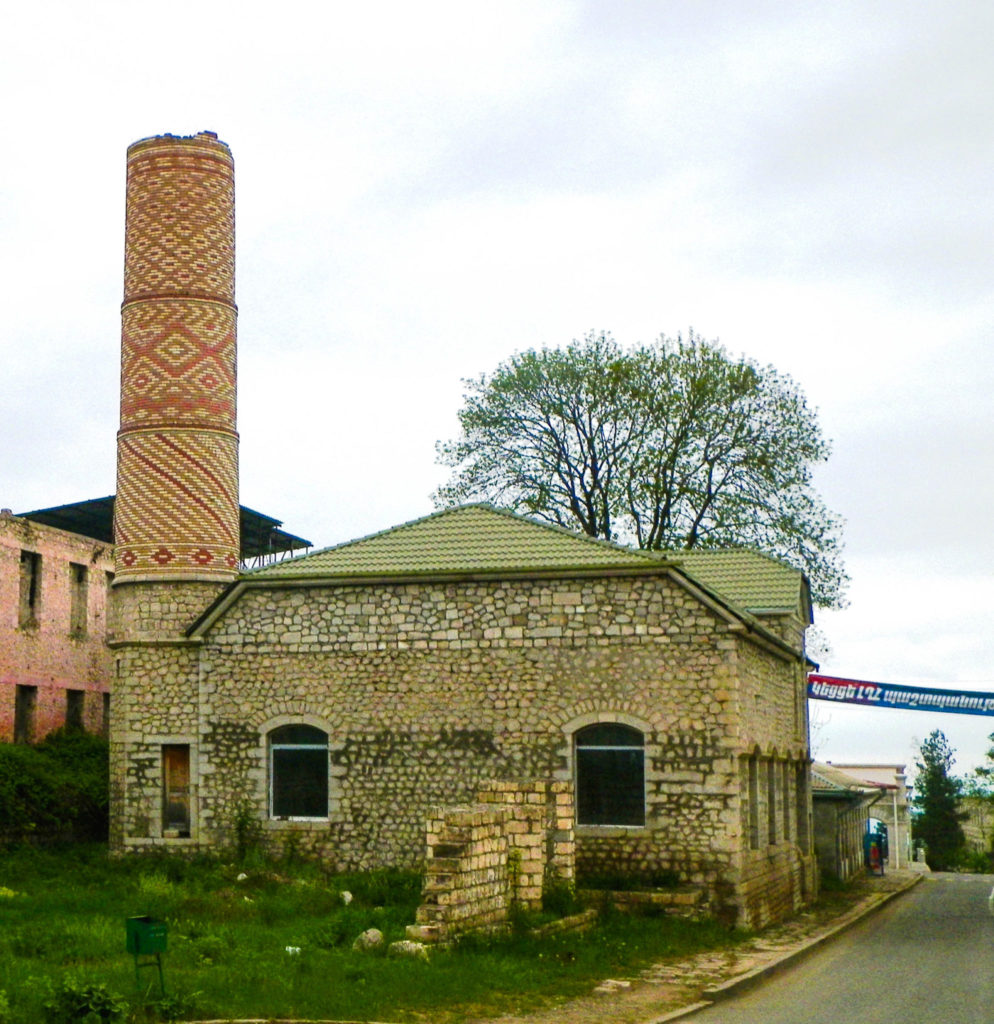Armenian vandalism in Shusha
Saatli Mosque

One of the historical and religious monuments of 19th century Shush city that was built by prominent Azerbaijani architect Karbalayi Safikhan Garabaghi was Saatli Mosque. The city of Shusha consisted of 17 mahallas (quarter/district/neighborhood) that were divided into upper and lower mahallas. Saatli Mosque was located on the Saatli mahalla, which was part of the upper mahallas of Shusha city. The Saatli Mosque was built in 1883 at the place of the mosque and madrasah built by Panah Ali khan in 1759.[1] As it is mentioned before, the architect of the Mosque was Karbalayi Safikhan Garabaghi. Hereby, it is noteworthy to mention that while restoring the minaret of the Saatli Mosque in 1910 Karbalayi Safikhan Garabaghi fell down from the minaret and after nine days of this incident he passed away at the age of 93.[2]
Saatli Mosque is considered one of the final masterpieces of Karbalayi Safikhan Garabaghi. The mosque was registered by the Ministry of Culture and Tourism of the Republic of Azerbaijan as a historical and cultural monument of state importance. The mosque has a three-naved prayer hall and two brick minarets with especially patterned decoration specific to architecture of Karabakh. General structure of the minarets of the Mosque resembles the minarets of Yukhari Govhar Agha and Agdam Juma Mosques.[3]
Although the Saatli Mosque has been renovated in 1980s, it was turned into a ruin. Its rich interiors were completely destroyed, and its minaret was partially destroyed by Armenians after the occupation of the Shusha city by Armenian Armed Forces in May 1992.[4]
[1] “Shusha Region”, Armenian Vandalism: Azerbaijani Monuments in Captive. https://www.armenianvandalism.az/en_general.html.
[2] Qarabagli, Rizvan, “The Demos of Karabakh”, Vision of Azerbaijan, March-April 2010. http://www.visions.az/en/news/39/ef80ff99/.
[3] Shusha Region”.
[4] “Saatli Mosque”, Ministry of Culture of the Republic of Azerbaijan, 15 October 2020. http://mct.gov.az/en/common-news/13264.


